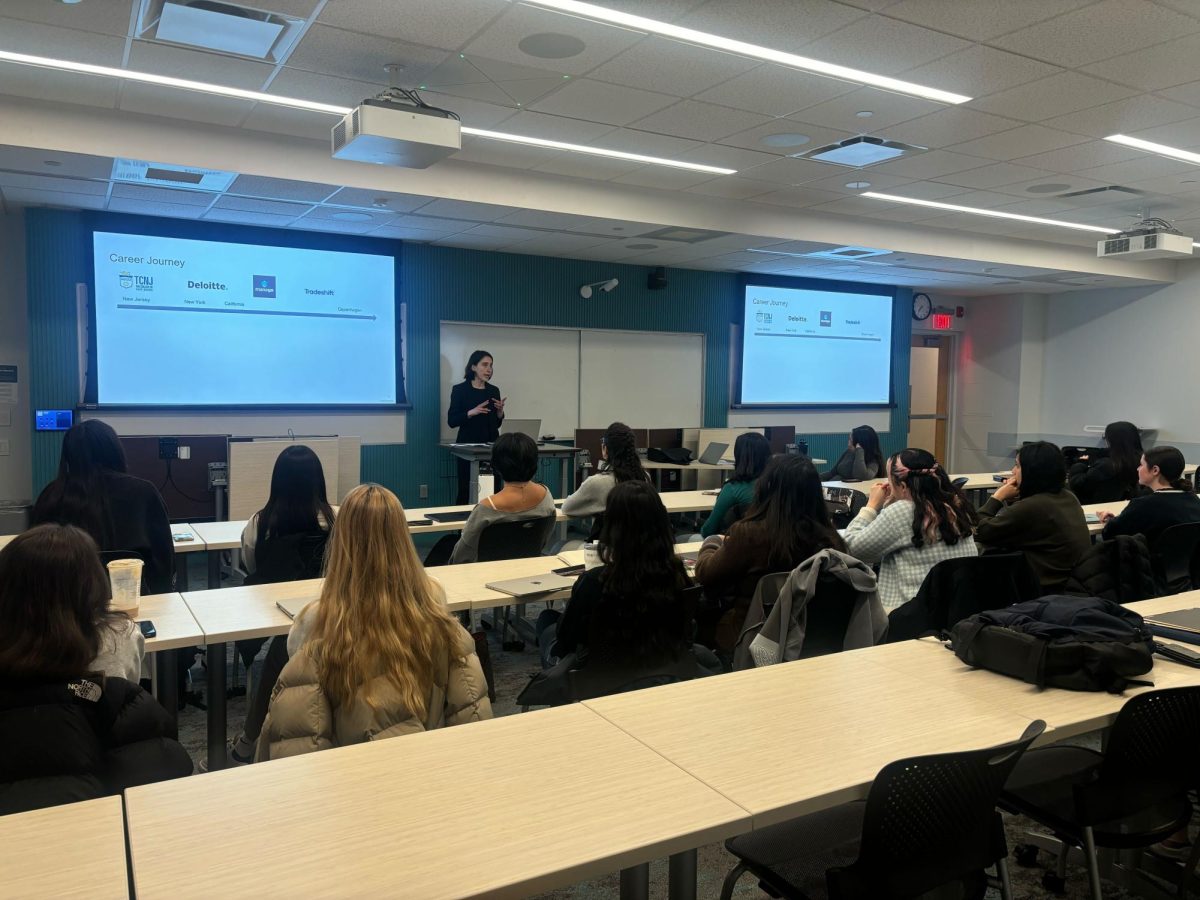Walking onto the stage in Blackman Auditorium as though he had accidentally found it, cartoonist Art Spiegelman was presented with an ashtray from Del Lewis, director of the Center for the Arts at Northeastern University.
Within minutes, Spiegel-man, a notorious smoker, lit up, saying the audience was experiencing the same smell of death and smoke as he had in New York City on September 11.
Spiegelman, who wore a black vest covering his soft middle, is best known for his designs on the front cover of The New Yorker magazine. In addition to this work, he won a Pulitzer Prize in 1992 for his comic book narrative “MAUS.” The book visually details the Holocaust, portraying Jews as mice and Nazis as cats. On a personal level, Spiegelman uses his parents’ persecution and escape from Nazis during World War II to unfold the story.
To start his lecture, “Comix 101: An Evening with Art Spiegelman,” he showed slides of what life was like on Sept. 10, 2001, then on September 11 and then present day life. On Sept. 10, families were sedate in front of their televisions, the next day families were on edge with wiry hair and scared looks and today, a “new normal” is born, wiry hair, with an old sedate look — it took awhile to get to the new normal, Spiegelman said.
He recounted his day on September 11, saying he “saw the plane hit the tower because I was out to vote in the primary.” He and his wife saw the North World Trade Center tower collapse behind him, but he had “no benefit of misinformation” from journalists.
Spiegelman said he went to his daughter’s school to make sure she was safe, but she was more shocked to see her parents in the building than she was to witness the events taking place near their Canal Street home.
Shortly after the terrorist attack, Spiegelman was contacted by his editor to create the cover for a special issue of The New Yorker, that would hit stands three days later.
Under one light, the cover appeared to be black, but at a different angle the viewer can see the shadow of the two towers — now a relic of the metropolis.
“I never wanted to be a political cartoonist,” Spiegelman said. “It became integrated in covering September 11.”
The day and aftermath significantly affected the artist, he said.
“I didn’t even listen to music after September 11; it was too exquisite,” he said.
After he spoke about September 11, he ran through a history of comics and his influences.
“Comics work the way the brain works — in small bursts of language,” he said. “Comics take time into space and allow you create beats and rhythm.”
The cartoonist revealed whose work he admired, Charles Schulz (Peanuts), and those who he felt received unnecessary hype, such as Roy Lichtenstein. Lichtenstein was known for his pop art and brightly colored comic frames.
“Roy Lichtenstein did no less for comics than Andy Warhol did for soup,” Spiegelman said.
Spiegelman also highlighted the technique of comic drawing. Seventy-five years ago, a Swiss artist began toying with the idea of the shape of someone’s head telling their personality. For example, thugs are drawn with larger heads and sloping foreheads, Spiegelman said.
He also said, readers remember an initial image, so “you don’t have to do it as well” the second time around. He said “people already know what it looks like.”
Before the night was through, Spiegelman fielded questions from the audience, but — not before he took a cigarette break, saying he’d be back in four and half minutes. In less than his estimated time, Spiegelman returned joking that he had “switched to heroin.”
When asked at one point did he realize he was going to make a career out of cartooning, he said, “I’m still working at it.”









